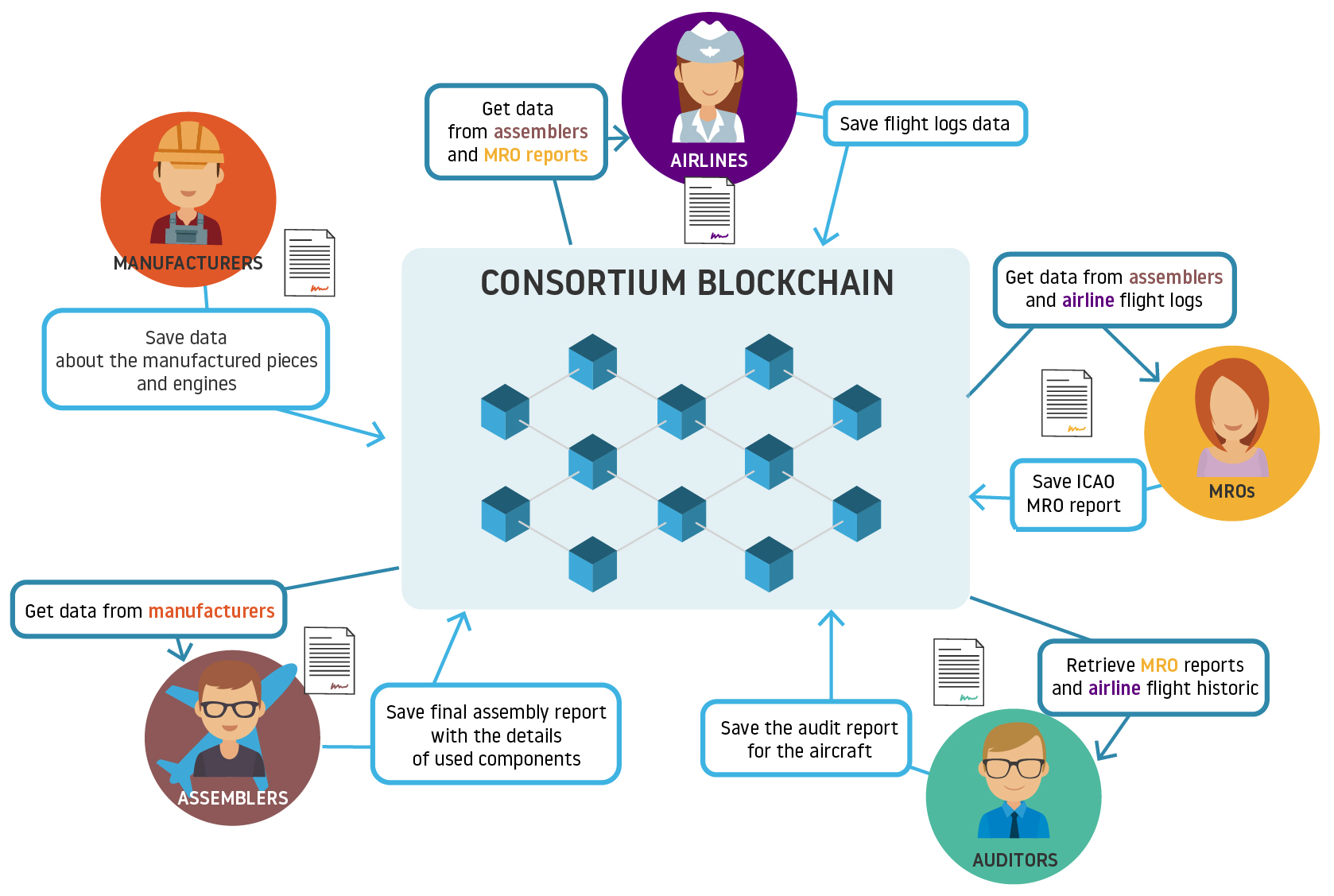Aircraft manufacturing is composed of multiple steps from the designing phase all the way to the final delivery of the plane. Miles of technical people participate in this workflow: building the components, transporting them, assembling the pieces and assuring that all the sub-processes have successfully passed the validation tests all before delivery of the aircraft to the customer. Sometimes, following up on the traceability of this procedure can be hard. Tracking the complete life-cycle of each component helps identify detected failures of said components and service them beforehand.
How are airlines currently managing their fleets maintenance?
Nowadays, the aircraft maintenance records can be issued through paper or electronic format. Aviation companies have been leaders in digitizing their sales and distribution data, but the digital revolution has been slow in MRO (). Individual companies such as airlines, MROs and OEMS are concerned with safety and work hard to preserve the integrity of maintenance records. However, most of these companies are slowly migrating towards the use of electronic aircraft maintenance records (EAMR). Each of these EAMRs is stored within isolated databases maintained by the data owners, which highly increases the retrieval time in the case of accident investigation or audit processes. Additionally, these records are owned by the agency involved in maintaining the aircraft, so access to this information is quite restrictive for the rest of stakeholders interested – e.g., airlines, manufacturers or even public authorities.
And when does Blockchain come in?
After this brief introduction, how could we improve the aircraft maintenance process using Blockchain technology? Blockchain can be defined as an inmutable, decentralized and secure database. This means that the information stored in this super secure database can not be altered, and that its content is replicated in all the nodes along the network. With these premises, it seems like a disruptive technology like Blockchain could be a solution to store the aircraft maintenance records securely, enabling the exchange of sensitive information, either publicly, privately or within a closed group of partners.
Which Blockchain type fits this scenario better?
This depends on the sensitivity of the data and if we want to share the information publicly or set permissions between the stakeholders using a private network.
- Public blockchain: Anyone in the network can explore the information saved in the blockchain.
- Private blockchain: All the members with access to the network can explore the data saved in the blockchain
- Consortium blockchain: The data is only available for certain members of the private blockchain. The information access management is based on permissions between the roles.
With regards to the level of confidentiality required for sharing this kind of data, a Consortium Blockchain is the likely best choice for saving AMRs. Each role would only be able to read or write the data he is allowed to, so permissions could be configured between the members that participate in the network – for example, airlines, manufacturers, MROs, aircraft sellers or auditors. In order to manage these permissions to control which roles have access to read or write what data, we must introduce a new blockchain concept – the Smart Contracts.
Smart Contracts are definitions of logic rules where developers specify the relationships between data providers and their access rights over the information stored in the blockchain. For instance, though a manufacturer company might not require access to information about aircraft flight logs, said information might be very useful for an auditor or assembly companies. Smart Contracts allows blockchain technology to execute rules autonomously and automatically without intermediaries or mediators for validating the data exchange process.
The diagram below describes a simplified scenario with the most important roles involved in the aircraft maintenance process, using a Consortium Blockchain for data sharing. However, each role can only read the information to which it has permission to access. Thus, the Smart Contracts manage how the data flows within the blockchain, validating the traceability and security of the information stored in it.




